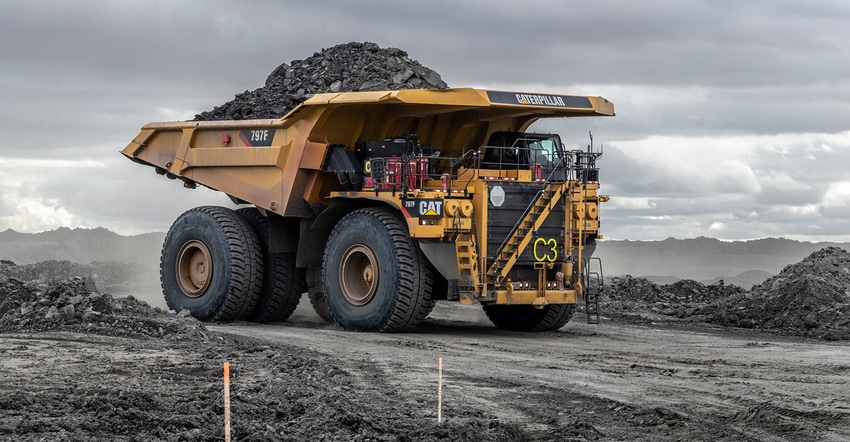January 19, 2021

A visit to CES, which used to be known as the Consumer Electronics Show, is often about future technology. And sometimes technology can show up in unexpected places. That was the cheeky approach Caterpillar took as a new exhibitor at the 2021 event, which went all digital in 2021.
The Peoria, Ill.-based equipment giant asked a simple question during a virtual presentation: Why is Caterpillar at CES?
�“That’s the point,” shares Denise Johnson, group president of resource industries at Caterpillar. “Many think that heavy equipment is all we do.”
The CES audience is a high-tech group who knows little about mining, large construction, material handling or waste industries. And most don’t know the amount of technology that is now required to run even the largest machines in those industries.
“We do all we can to make our machines productive and safe,” Johnson says. “We’re incorporating technology into machines and operating environments to keep people safe, and provide better visibility to what’s around them.”
She says the technology deployed is also helping Cat customers get better outcomes, squeeze every ounce of productivity into those operations, and monitor machines and people for efficiency gains.
Autonomy at work
CES lovers know that there’s a lot of talk about autonomy from self-driving cars to autonomous systems used in flight. Caterpillar shows that big mining trucks can be robots too, and in a big way.
Farmers know that GPS has been a great tool for years. Caterpillar started using that tech early on when the first satellites went up.
Work on one of the first autonomous vehicles occurred as far back as the 1980s at a quarry in Texas. Today, the company has 350 trucks running 24/7 on three continents, creating the largest fleet of autonomous trucks in the world. “We’ve operated for 87 million kilometers without a lost-time injury,” Johnson notes.
During CES, the company shared video of those trucks at work with a focus on the 797F, which puts the world “monster” in Monster Truck. That machine weighs 284.6 tons empty, but when fully loaded tips the scale to 687.5 tons. Cat says this is the weight of 15 189-foot-long passenger planes. And since the autonomy program started to work with these machines, they’ve moved 4.91 trillion pounds of material.
Caterpillar has developed a cloud-based service called Minestar, along with its Cat Command systems, to go autonomous. A video showing how these autonomous trucks worked was a highlight of the official presentation, but the company created a microsite that shares more videos and an in-depth look at how autonomous vehicles have made the worksite safer.
“We’ve had success stories with our Minestar products,” Johnson says. “We’ve seen operator fatigue decline 94% in just 90 days.”
Bringing autonomy to a work site can have a wide range of benefits. And farmers know that automating steering on tractors makes a big difference in fatigue during very busy times.
Another Caterpillar motive
While Caterpillar was on hand to show the technology at work in that heavy equipment, there was another reason the company took part in what became a big virtual show: finding employees.
Caterpillar is employing technology experts in a wide range of new ways, and Johnson says they’re looking to find more talented people to join the team.
“We have hundreds of computer engineers and data analysts at work,” Johnson adds. “We have a team of specialists with years of experience implementing solutions and getting maximum value from them.”
The rise of technology in heavy equipment is boosting the need for people outside the industry to join the business. Where better to recruit but at an event focused on innovation?
You can check out the Caterpillar microsite by visiting cat.com. It’s filled with videos and information showing the latest technology at work, including a case study of an oil sands product in harsh condi
About the Author(s)
You May Also Like






